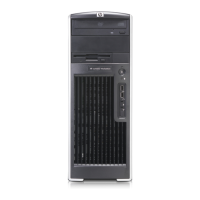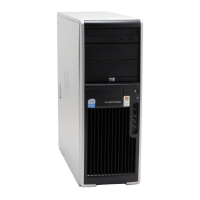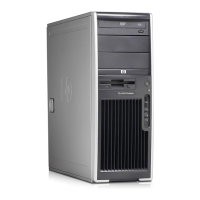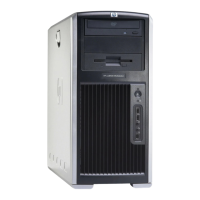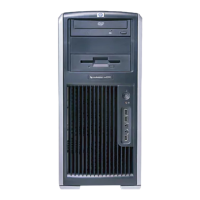REMOVAL AND REPLACEMENT OF COMPONENTS 89
Chapter 4
PCI Express
PCI Express is a new hardware interconnect standard (for example, I/O slots). PCI Express is a point-to-
point architecture and uses a serial data transmission protocol. A single PCI Express lane consists of 4
wires and is capable of transmitting 250 MB/sec in a single direction or 500 MB/sec in both directions
simultaneously. This bandwidth is not affected by what is happening on other PCI Express buses or
legacy PCI/PCI-X buses (provided that total bandwidth can be handled by the CPU and the memory
subsystem.) The transmission protocol is somewhat similar to that used for a LAN connection and
contains error correction and detection, packet addressing and other network features.
PCI Express improves system attributes. PCI Express enables a low-power, scalable, high-bandwidth
communication path with a small number of connections (wires) compared to traditional parallel
interfaces (e.g. PCI).
The PCI Express IO slots can support other PCI Express cards with lesser bus bandwidth than what is
physically defined for the slot. Use the following table to determine compatibility.
For example, a PCI Express x8 card does not work in a PCI Express x1 slot, but a PCI Express x1 card
works in a PCI Express x8 slot.
NOTE The HP Workstation xw6200 contains one PCI Express x8 slot that supports x4 bandwidth. If a
PCI Express x8 card is plugged into the PCI Express x8 slot, the card runs at x4 bandwidth.
Table 4-6 PCI Express Compatibility Matrix for xw6200
PCI Express x1 Slot
(not available)
PCI Express x4 Slot
(not available)
PCI Express x8 Slot PCI Express x16 Slot
PCI Express x1
Card
YYYY
PCI Express x4
Card
NYYN
PCI Express x8
Card
NNYN
PCI Express
x16 Card
NNNY

